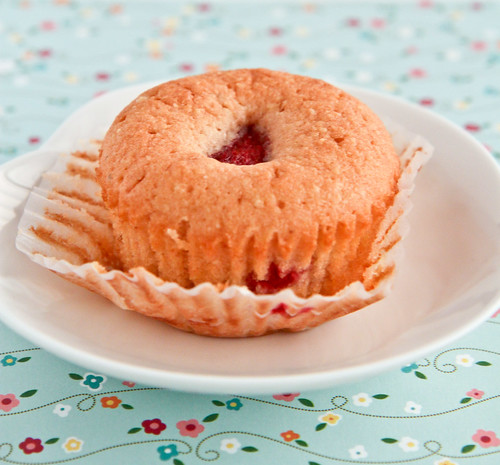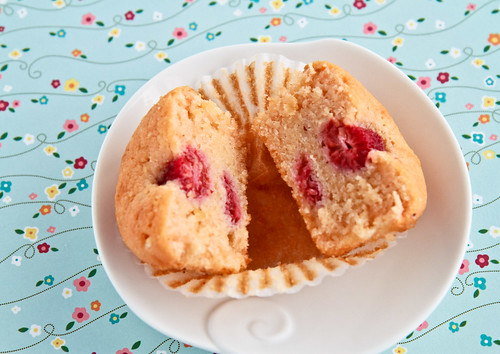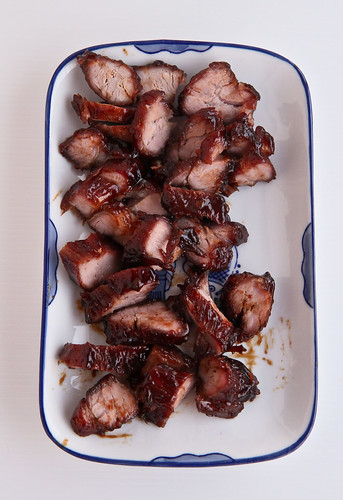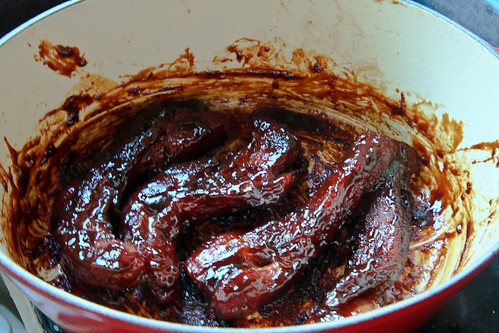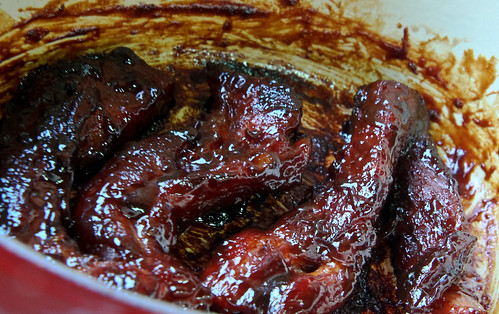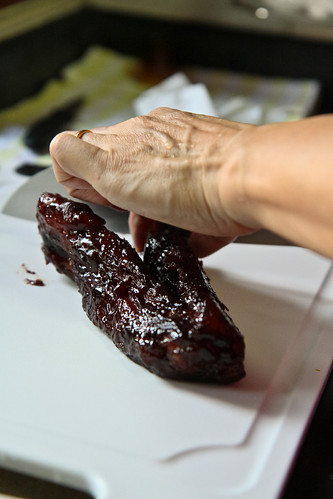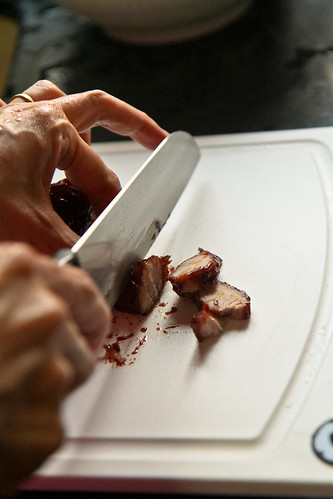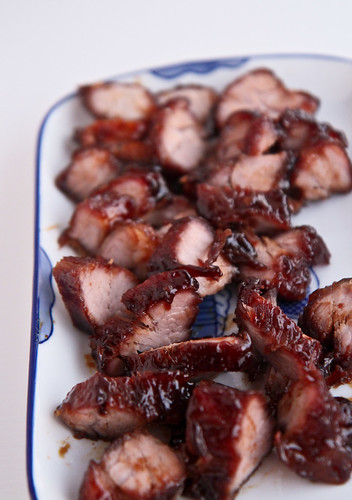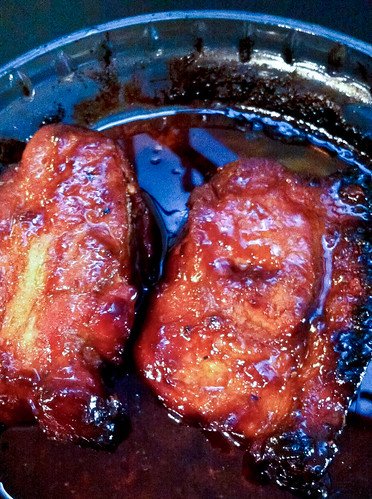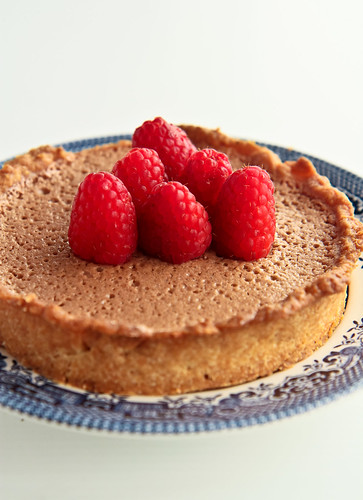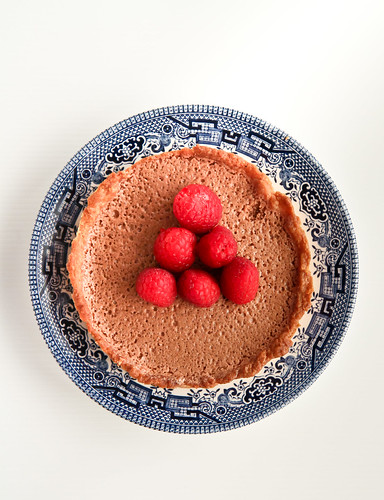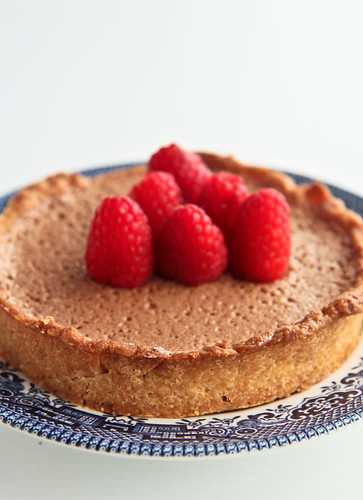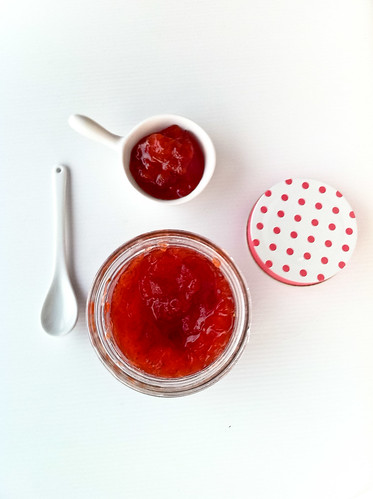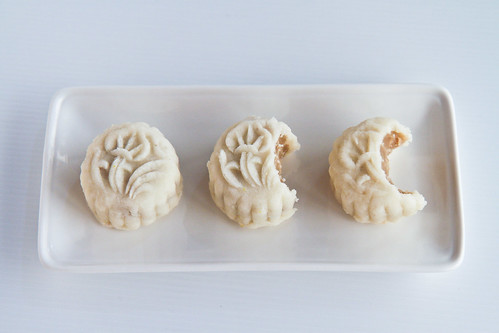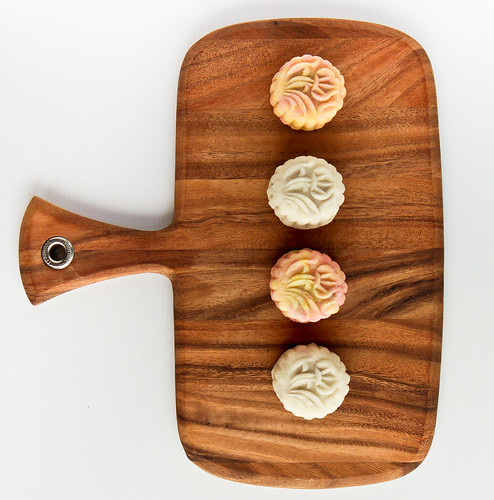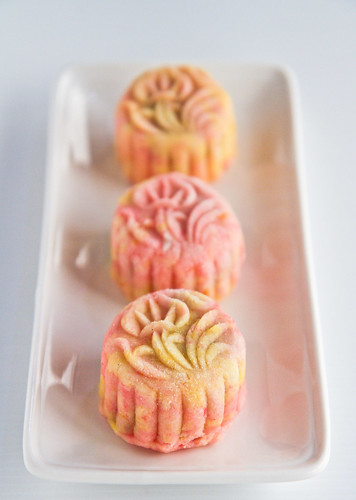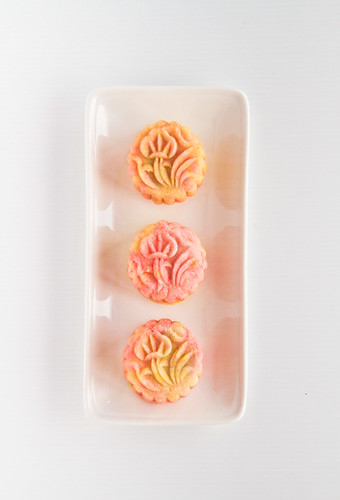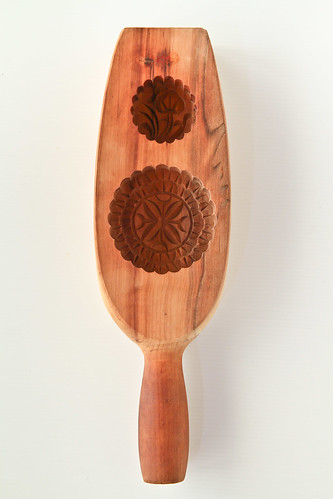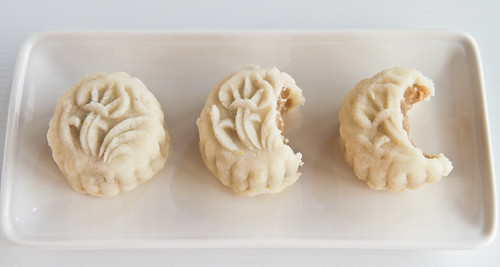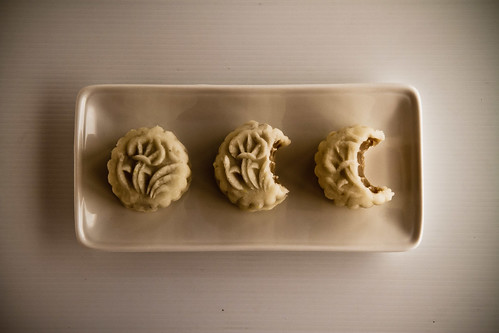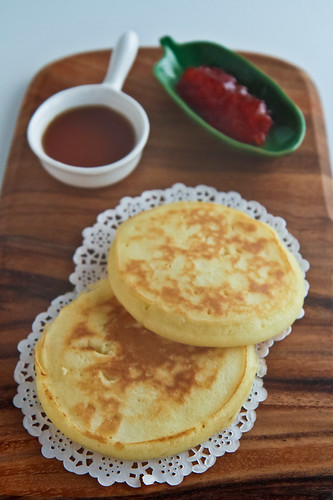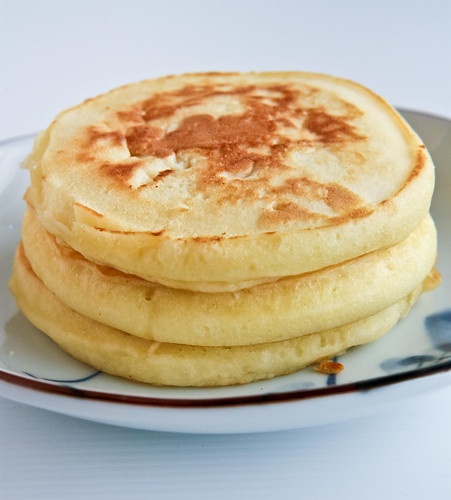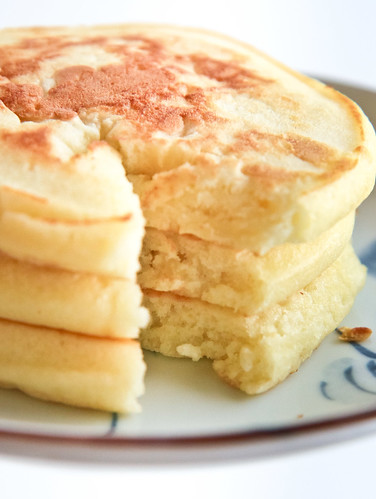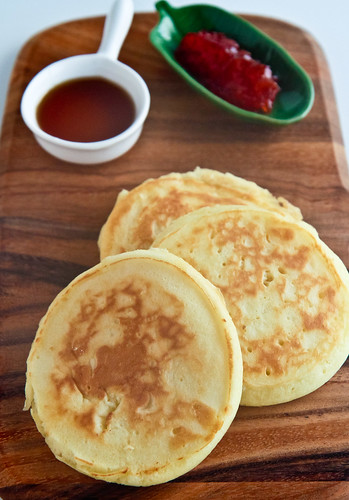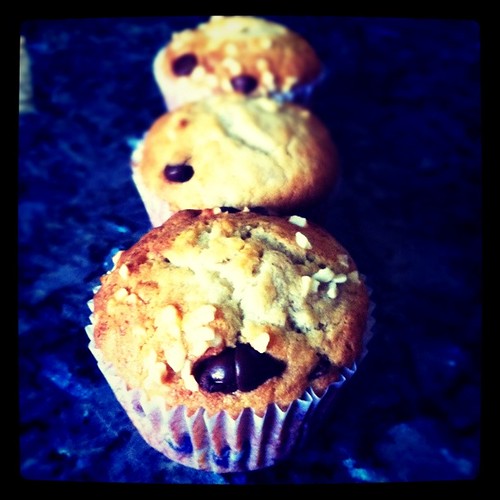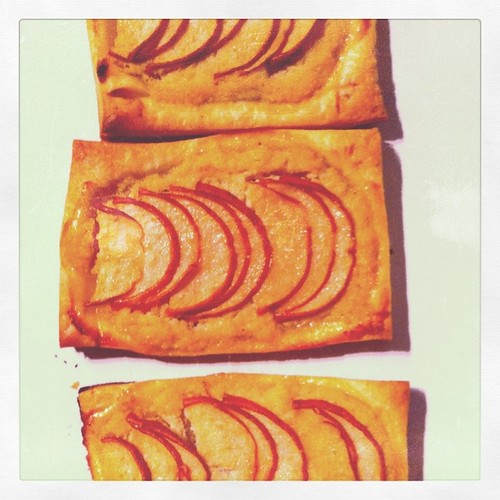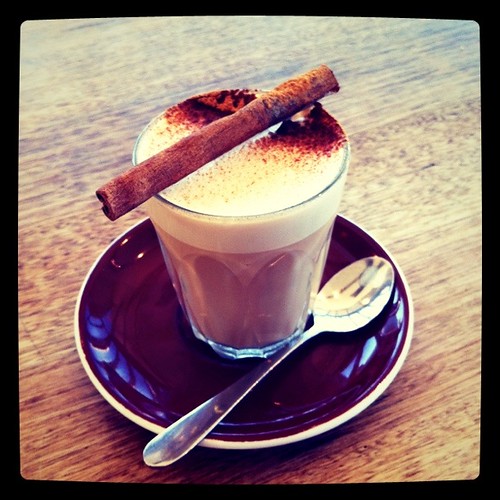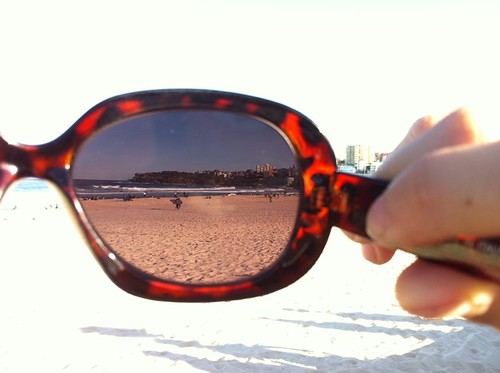Ever since I anointed Pierre Hermé as my pastry god, I've been wanting to try out this particular flavor combination, but didn't because raspberries were always so expensive and I didn't want to splurge on them. Well, I'm glad I did because raspberries were on sale and boy oh boy, was my cake ispahan delicious! I really have to thank heavens for the day Pierre Hermé dreamed up of this flavor combination, because just having rose and raspberry in the cupcake was enough to make me beam from ear to ear, so I cannot imagine what I'd be like with the addition of lychees :]
I've always wanted to make an Ispahan-inspired cake, one chockfull of raspberries and roses and lychees, and I wanted an authentic recipe from the god himself. There are many ispahan-inspired desserts online, and some of my favorite (bookmarked) ones are from Swee San and Rachel, who used the interesting flavor combination to make their own versions of Ispahan petit fours. For those not in the know, well, Ispahan is both a name of a city inTurkey Iran (Isfahan) (I know it's in Iran but don't know why I wrote Turkey hmm) as well as the name of a damask-colored rose. I've read bits and pieces that Pierre Hermé was inspired by the rose to include it into his macarons, and it was at Laduree where he first combined raspberries, rose and lychees and named it the Ispahan. And he never looked back of course. The Ispahan is now synonymous with the name Pierre Hermé and I do think that in decades to come, this combination will become as commonplace as the cakes like black forest, tiramisu, opera, etc.
This was also the first recipe I tried from my newly bought Pierre Hermé book, Le livre des fours secs et moelleux de Pierre Hermé, which loosely translates to the book of petit fours and treats of Pierre Hermé. Interestingly, this book is not available in English or French, but only in Japanese and Chinese. It was of course originally in Japanese to cater to the Japanese market where Pierre Hermé has the second greatest number of stores (after France/Paris) and the Chinese being Chinese, translated it into this Chinese version I have. It's perhaps one of my cheapest Pierre Hermé's books, costing me NT$300, which amounts to around S$15/US$10. And besides this recipe, I've also tried his madeleine recipes (which can be found in his other books as well), which of course taste delicious as well. There is also a recipe for madeleine ispahan, but I need freeze-dried raspberries for that, so that's currently shelved at the moment. When CNY rolls about the corner, I'll definitely be spamming this book quite a lot for all the cookie recipes for my CNY cookie fix.
 |
| I like how the sunken raspberry looks vaguely like a heart. |
I've always wanted to make an Ispahan-inspired cake, one chockfull of raspberries and roses and lychees, and I wanted an authentic recipe from the god himself. There are many ispahan-inspired desserts online, and some of my favorite (bookmarked) ones are from Swee San and Rachel, who used the interesting flavor combination to make their own versions of Ispahan petit fours. For those not in the know, well, Ispahan is both a name of a city in
This was also the first recipe I tried from my newly bought Pierre Hermé book, Le livre des fours secs et moelleux de Pierre Hermé, which loosely translates to the book of petit fours and treats of Pierre Hermé. Interestingly, this book is not available in English or French, but only in Japanese and Chinese. It was of course originally in Japanese to cater to the Japanese market where Pierre Hermé has the second greatest number of stores (after France/Paris) and the Chinese being Chinese, translated it into this Chinese version I have. It's perhaps one of my cheapest Pierre Hermé's books, costing me NT$300, which amounts to around S$15/US$10. And besides this recipe, I've also tried his madeleine recipes (which can be found in his other books as well), which of course taste delicious as well. There is also a recipe for madeleine ispahan, but I need freeze-dried raspberries for that, so that's currently shelved at the moment. When CNY rolls about the corner, I'll definitely be spamming this book quite a lot for all the cookie recipes for my CNY cookie fix.
As you can see, I couldn't resist modifying the recipe into making cupcakes instead of a normal cake. The tiny bits of white you see in the picture above are actually bits of almond, which I've explained below that I left intentionally coarse for textural purposes.
Now, having finally tried my hand at the infamous ispahan combination (and having tasted the original before), I've to say that I've got lots more work to do! Perhaps a pricier (and more exotic) rose essence (a la Yumeiro Patisserie) is in order! ;p
Pierre Hermé's Ispahan Cupcakes
Adapted from Le livre des fours secs et moelleux de Pierre Hermé
Makes a 16x5cm (6-inch) round cake or 6-8 cupcakes
Ingredients
Method
85g unsalted butter
60g icing sugar
85g almond meal/flour/powder
35g egg yolk (about 1.5 egg)
20g whole egg
15g milk
3g rose essence
45g cake flour
45g egg white (about 1.5 egg)
20g castor sugar
25g raspberries
- Cream butter until fluffy. Add the icing sugar and ground almonds together, mixing until well combined.
- Add in the egg yolk, followed by the whole egg.
- Add the rose essence into the milk, and add red coloring if desired. Add this milk mixture into the butter mixture above, combining well.
- In a clean mixing bowl, beat the egg whites until foamy. Add the castor sugar and continue beating the egg whites until stiff peaks are achieved.
- Add a third of the stiff egg whites into the milk-butter mixture to lighten. Then, fold in the remaining egg white until no white streaks are left.
- Pour the batter into your prepared pans. Pour until the pan is half full, before adding the raspberries in the centre and filling the pan to about 80% full.
- Place the rack at the middle tier and bake in a preheated oven at 160°C for about 45 minutes for the cake or 20 minutes for cupcakes. When the top turns a light golden brown and a cake tester comes out clean, the cake is done.
Janine's jots:
- Taste: Unlike other Ispahan desserts created by Pierre Hermé, this doesn't have the litchi (lychee) that we're so familiar with, and I reckon that an additional of lychee in the centre together with the raspberry would definitely complicate the flavor profile, in a totally awesome way of course. For those hoping for a stronger rose taste, you might want to increase the rose essence by a gram or so, because it's rather subtle in this cake. I like it that way though, and if you want a stronger whiff of rose, consume the cake the next day. The rose flavor is more prominent then.
- Texture: My almonds were ground at home and not store-bought, and I intentionally left a portion of it more coarsely ground, so this could be tasted in the cake. It tastes almost like not as dense financier.
- Serving size: Makes a 6-inch cake or 6-8 cupcakes, depending on how many raspberries you fill the inside with and how large your cupcakes are. I prefer the cupcakes because they're easier to consume and cuter of course.
- Modifications: As usual, I reduced the icing sugar from an original of 85g to 60g and I still found the cupcakes quite sweet, but note that if you have tart raspberries or you are intending to use more than 2-3 raspberries in the cupcake, you might want to increase the sugar to counteract the tartness.
- Storage: I wouldn't advise storing the cake at room temperature for more than a day because the raspberry inside will turn soft and gross. It stores well in the refrigerator for 3 days or more. Do warm it up before consuming to get the best flavor out of it.
- Would I make this again?: Yup definitely, it beats having the usual chocolate and vanilla cupcakes. But I am definitely trying out the lychee idea as well.
- Other comments: The original recipe calls for a fondant glacage to be poured over the top, but as I was intending this to be a un-fancy teacake, I skipped it.
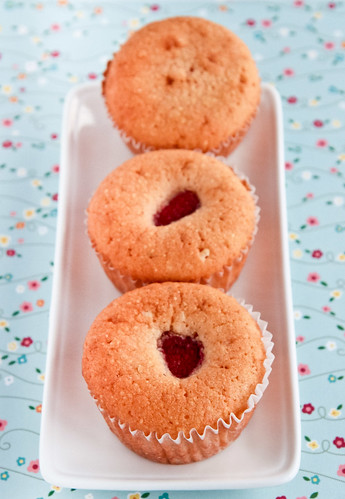 |
| The ones with more raspberries definitely tasted better. |
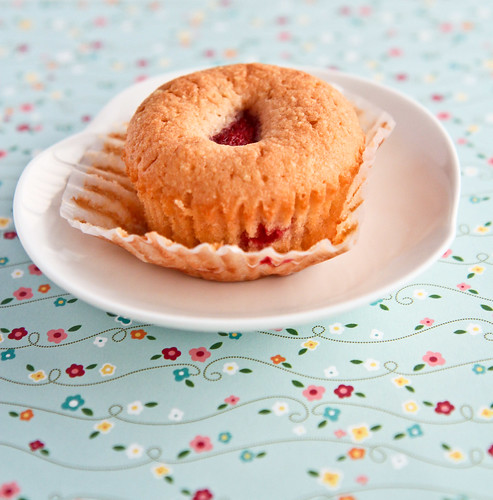 |
| One last lingering look at my beloved ispahan cupcake. |


